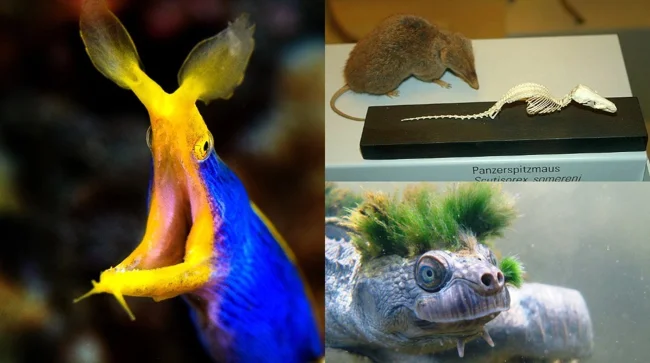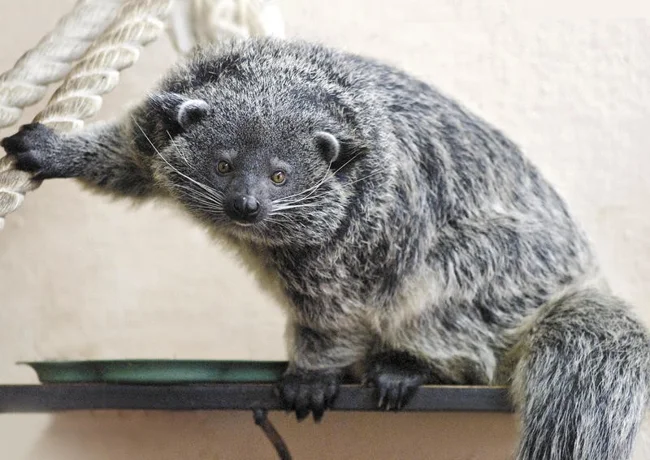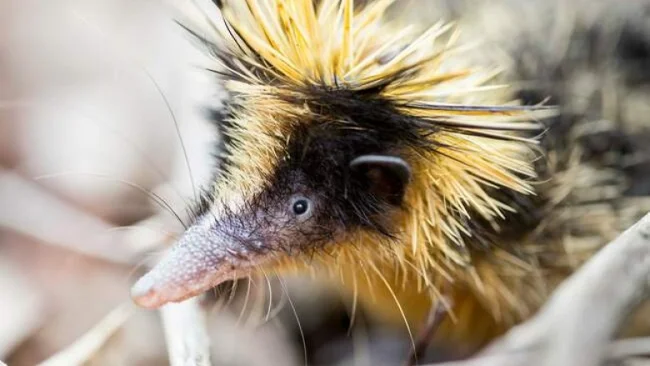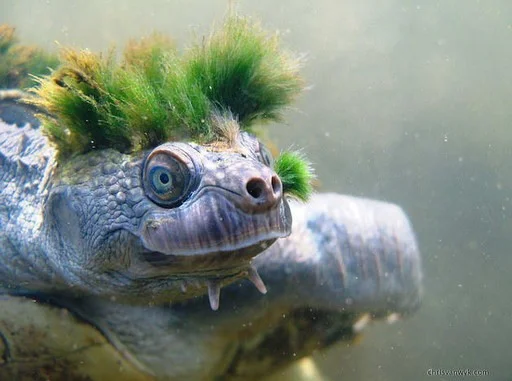About a little bear with the habits of a cat, a heavy-duty shrew and other unusual little brothers of ours. 
Super strong shrew 
The tiny animal in the photo is called an armadillo shrew. In the African countries where this shrew lives, it is revered and legends are made about it. The shrew is considered an invulnerable animal. The tribes living in the Congo call it the hero shrew (in English it is also called hero shrew) and believe that it is enough to have its skin with you to become invulnerable in battle. Shamans prepare a potion from the ashes of armadillos, which gives warriors courage in battle.
The most heroic thing about the shrew is its unique spine. It helps her remain unharmed after blows from the powerful paws of predators, squeeze into narrow crevices, and also drag weights that are prohibitive for such a baby. The armadillo shrew can lift an object 1000 times heavier than itself. Multiply your weight by 1000 and figure out how much you would lift if you had the spine of a heroic shrew. The animal needs this superpower to lift heavy palm leaves and sticks, under which beetles and worms are hidden.
cat bear 
Are you familiar with binturongs? This cute animal lives in tropical forests in India, Vietnam, China, Malaysia, Indonesia, and the Philippines. This is a big cat with the habits of a bear or a small bear with the habits of a cat. His name is translated from Malaysian as “cat bear”. Binturong clumsily walks on the ground like a bear and is strange and unpredictable like a cat. It has a long tail, with which the animal clings to branches and grabs fruits. Binturong is a good swimmer and loves to eat fish. In general, he eats everything he can get his hands on and is very fond of sweets. The animal is not dangerous to humans. He readily makes contact and is easily tamed.
Binturongs could easily conquer the Internet, because they are as weird as cats and are just as cute. However, few people dare to keep a cat bear at home. The fact is that both males and females are very odorous and mark their territory too often. They say their secret smells like popcorn or corn chips. Not the worst smell, but it can be too much popcorn. By the way, the secret of binturong is valuable and is used in perfumery. It is added to make the scent of perfume last longer. 
They are also ready to run around the house almost all day, unlike cats, who usually choose late night for this activity.
In the wild, bear cats live no more than 10 years, but in a zoo they can live for a quarter of a century.
Wrong hedgehog 
The striped tenrec lives exclusively in Madagascar. He looks like a spiny chicken, a cross between Pikachu and a hedgehog. The striped tenrec is the only mammal that communicates by stridulation (in other words, by chirping). That is, it is not only a hedgehog and a pikachu, but also a grasshopper. Large spines located on the back of the tenrec can vibrate independently of the smaller spines standing nearby. The spines vibrate and rub their tips against each other, creating a characteristic sound. Tenrecs chirp to signal to their relatives about danger, to find a partner or to call a cub.
The tenrec feeds on worms, which it finds using echolocation. Lives in burrows. In case of danger, it bristles with yellow spines around its head, similar to a lion's mane, and lowers its head.
Fickle Moray 
The ribbon moray looks like a Chinese dragon, which is constantly surprised by something. She lives in coral reefs in the Indian Ocean. The body of the moray eel is lubricated with bactericidal mucus, so it can crawl anywhere and even make a reliable hole in the sand - the mucus strengthens the sandy walls.
The ribbon moray eel has several features that are not fully understood and understood by scientists. Firstly, moray eels have two pairs of nostrils. The funny whiskers that decorate the long nose of the moray eel are the nostrils. With their help, she searches for prey - small fish and crabs. The second pair of nostrils is located behind the eyes. Secondly, the moray eel changes color three times during its life and changes sex once. Why they do this, scientists do not know. Baby males are black, teenage males are blue, adult males become females and acquire a yellow color. The females are first green, then yellow, and then the males are blue.
Moray eels do not live in captivity.
A turtle that can breathe not only through its nose 
There is a punk turtle living in Australia. This unusual animal lives exclusively in the Mary River basin, which is why its official name is the Mary River turtle. And unofficially the turtle is called green-haired because of the algae growing on its head. Because of this feature, river punks were a popular pet in the 1960s. They were actively sold in many pet stores and were very cheap, for which they received the nickname penny turtle.
Today, greenback turtles are endangered due to their low reproductive rate and predators that prey on their nests. By the way, turtles successfully hide from predators at the bottom of the Mary River. Pretending to be a moss-covered stone, they can lie at the bottom for up to three days. A unique feature helps them in this - they can breathe through the cloaca. Green-haired turtles also have the longest tail among all turtle species.
0 comments

